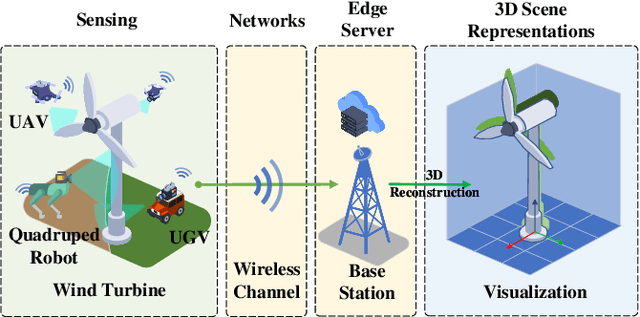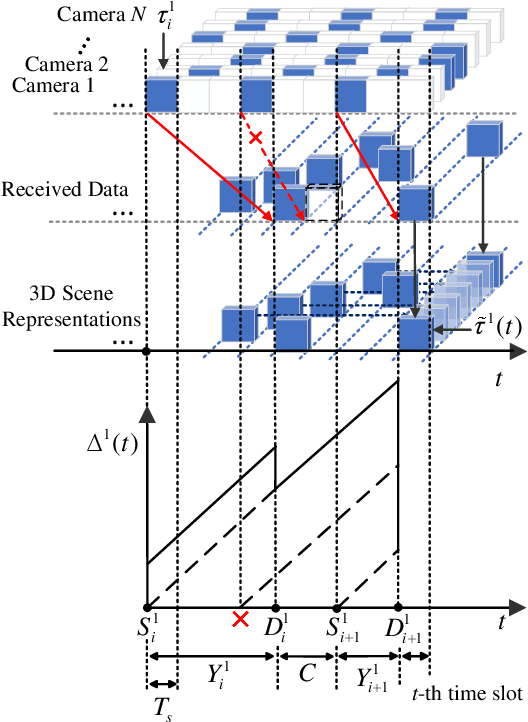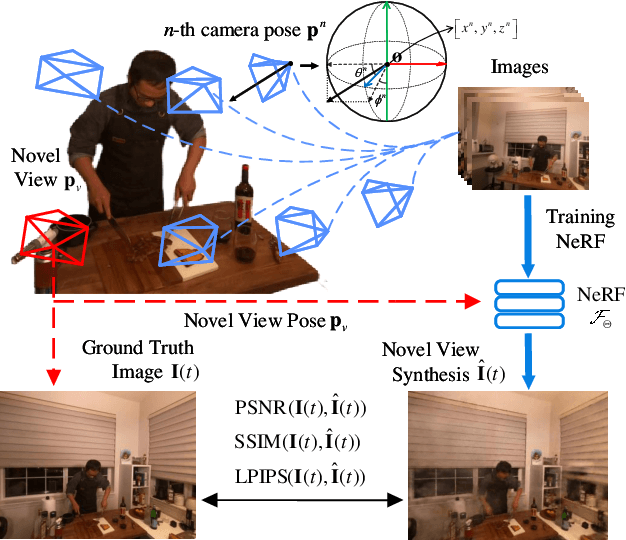Philip G. Zhao
Preference-Driven Active 3D Scene Representation for Robotic Inspection in Nuclear Decommissioning
Apr 02, 2025Abstract:Active 3D scene representation is pivotal in modern robotics applications, including remote inspection, manipulation, and telepresence. Traditional methods primarily optimize geometric fidelity or rendering accuracy, but often overlook operator-specific objectives, such as safety-critical coverage or task-driven viewpoints. This limitation leads to suboptimal viewpoint selection, particularly in constrained environments such as nuclear decommissioning. To bridge this gap, we introduce a novel framework that integrates expert operator preferences into the active 3D scene representation pipeline. Specifically, we employ Reinforcement Learning from Human Feedback (RLHF) to guide robotic path planning, reshaping the reward function based on expert input. To capture operator-specific priorities, we conduct interactive choice experiments that evaluate user preferences in 3D scene representation. We validate our framework using a UR3e robotic arm for reactor tile inspection in a nuclear decommissioning scenario. Compared to baseline methods, our approach enhances scene representation while optimizing trajectory efficiency. The RLHF-based policy consistently outperforms random selection, prioritizing task-critical details. By unifying explicit 3D geometric modeling with implicit human-in-the-loop optimization, this work establishes a foundation for adaptive, safety-critical robotic perception systems, paving the way for enhanced automation in nuclear decommissioning, remote maintenance, and other high-risk environments.
Real-Time Interactions Between Human Controllers and Remote Devices in Metaverse
Jul 23, 2024Abstract:Supporting real-time interactions between human controllers and remote devices remains a challenging goal in the Metaverse due to the stringent requirements on computing workload, communication throughput, and round-trip latency. In this paper, we establish a novel framework for real-time interactions through the virtual models in the Metaverse. Specifically, we jointly predict the motion of the human controller for 1) proactive rendering in the Metaverse and 2) generating control commands to the real-world remote device in advance. The virtual model is decoupled into two components for rendering and control, respectively. To dynamically adjust the prediction horizons for rendering and control, we develop a two-step human-in-the-loop continuous reinforcement learning approach and use an expert policy to improve the training efficiency. An experimental prototype is built to verify our algorithm with different communication latencies. Compared with the baseline policy without prediction, our proposed method can reduce 1) the Motion-To-Photon (MTP) latency between human motion and rendering feedback and 2) the root mean squared error (RMSE) between human motion and real-world remote devices significantly.
Timeliness-Fidelity Tradeoff in 3D Scene Representations
Jul 23, 2024



Abstract:Real-time three-dimensional (3D) scene representations serve as one of the building blocks that bolster various innovative applications, e.g., digital manufacturing, Virtual/Augmented/Extended/Mixed Reality (VR/AR/XR/MR), and the metaverse. Despite substantial efforts that have been made to real-time communications and computing, real-time 3D scene representations remain a challenging task. This paper investigates the tradeoff between timeliness and fidelity in real-time 3D scene representations. Specifically, we establish a framework to evaluate the impact of communication delay on the tradeoff, where the real-world scenario is monitored by multiple cameras that communicate with an edge server. To improve fidelity for 3D scene representations, we propose to use a single-step Proximal Policy Optimization (PPO) method that leverages the Age of Information (AoI) to decide if the received image needs to be involved in 3D scene representations and rendering. We test our framework and the proposed approach with different well-known 3D scene representation methods. Simulation results reveal that real-time 3D scene representation can be sensitively affected by communication delay, and our proposed method can achieve optimal 3D scene representation results.
 Add to Chrome
Add to Chrome Add to Firefox
Add to Firefox Add to Edge
Add to Edge